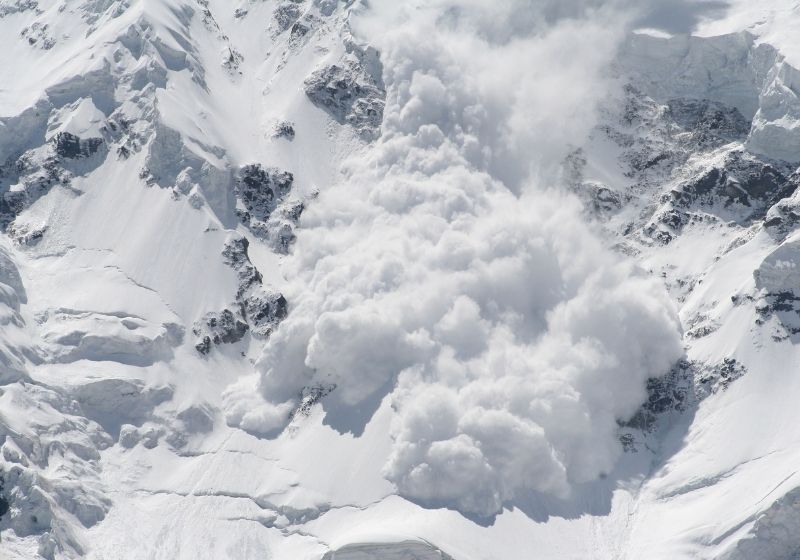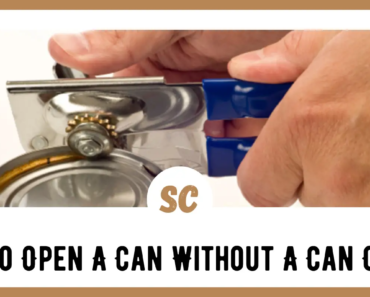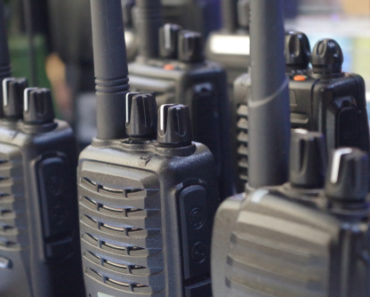Are you looking to enjoy sometime outdoor in the snow? Having the right avalanche gear could mean the difference between surviving an avalanche or successfully rescuing a buried victim and death.
While these will set you back a few hundred dollars, it is ultimately a small price to pay.
RELATED: How to Survive an Avalanche | Emergency Preparedness
Everything You Need to Know About Creating a Functional Avalanche Gear Kit
A Must-Have Avalanche Gear
1. Snow Probe
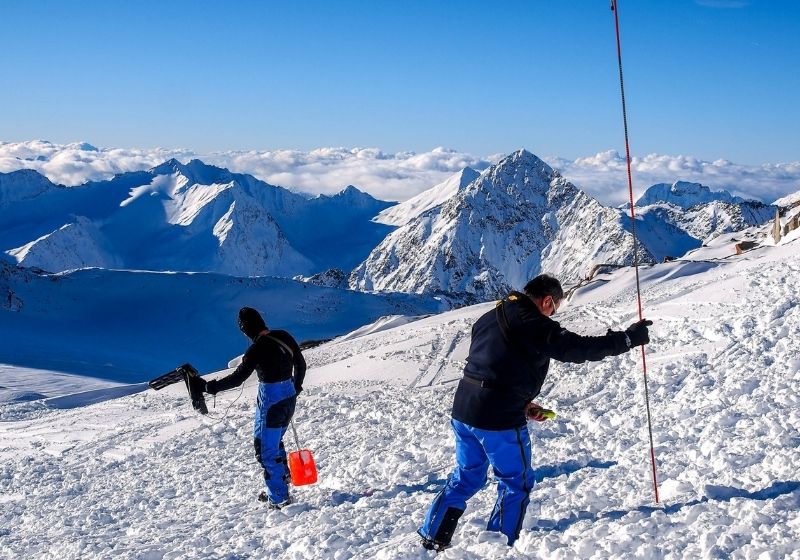
A snow probe is an avalanche gear that normally comes in handy at pinpointing the location of a buried person in snow following a transceiver search. Do not let its long tent-pole-like design fool you as the wand folds into sizable sections that will effortlessly fit in your backpack.
Don’t hold back on going for snow probes with longer overall lengths as they generally increase your chances of finding a person who is deeply buried in snow. What’s more, longer probes also improve probing convenience and efficiency since you can repeatedly probe an area to the needed depth without squatting every time.
2. Avalanche Transceiver
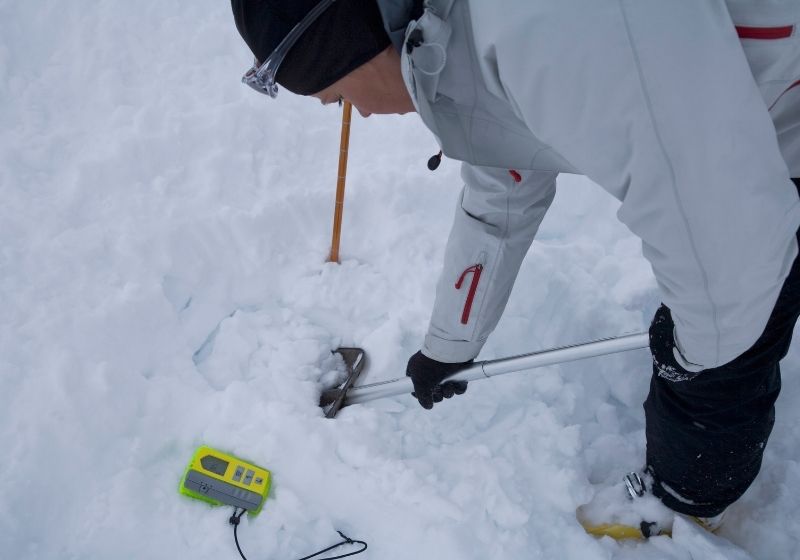
As the name suggests, an avalanche transceiver is an avalanche gear that transmits a local signal from the victim (in send mode) or picks up the same signal when used (in search or receive mode) by a victim’s companions.
Don’t confuse an avalanche transceiver with a personal locator beacon (PLB) which only transmits a call for help, but won’t actively help in finding the person buried in the snow. It is however important to pair one with your transceiver.
Tips:
- Always carry your transceivers as directed by the manual
- Learn and master how to use a transceiver even when you’re not on snowy terrain
- Always ensure that your transceiver is on send mode until you need to switch it to search mode
- Avoid carrying other electronic devices close to your transceiver to avoid interference
- Always conduct a transceiver check before heading out on a trail
3. Snow Shovel
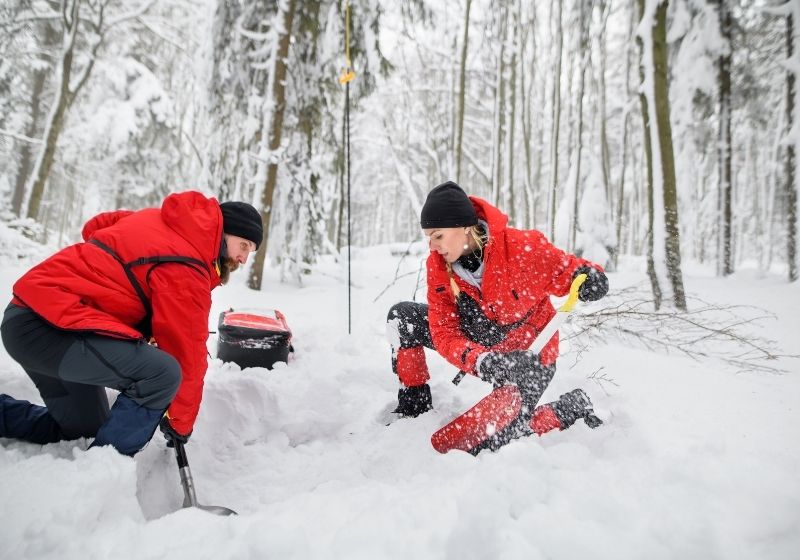
Most snow shovels are designed such that they can easily break down to stow in your backpack. Consider going for a bigger one which is more convenient as digging out a person can involve moving a huge amount of snow.
Tips:
- Metal avalanche shovels are the way to go, but aluminum ones are lighter and are equally as strong.
- Low weight and great ergonomics will contribute to the overall comfort and ease of use of your preferred snow shovel
- Pay close attention to the blade on your shovel as different blades are specialized for different functions. Keep in mind that a snow shovel will do way more than just dig a victim out of snow.
- Consider going for a snow shovel that has a hoe feature. This will come in handy when you prefer hoeing to scooping motion or when you need to chop down into the snow.
- Also, the type of grip and shaft on your snow shovel determines how easy it will be to use with mittens. T-grip handles are lightweight but a bit difficult to use with mittens. D-grip handles on the other hand are bulkier but easier to use with mittens.
- Lastly, keep in mind that you might need to use your snow shovel for more than just digging out a victim, to ensure you get the best all-round.
RELATED: 15+ Survival Strategies When Time is of the Essence
Nice to Have Avalanche Gear
4. Avalanche Airbag Backpacks
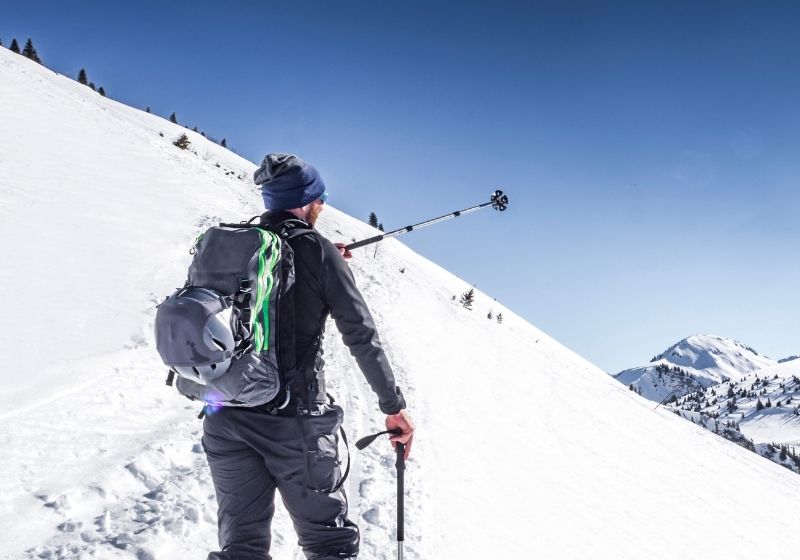
An avalanche gear list wouldn’t be complete without mentioning airbag backpacks which are designed to prevent you from getting buried or from getting buried further should you get caught in an avalanche. The instantly deployed airbags in the backpacks are inflated by either a super powerful fan or compressed-air cartridge after which it helps you rise to the top of an avalanche field, thereby minimizing rescue time.
- Cartridge-style airbag packs: These use compressed-gas cartridges refillable at designated locations or by the manufacturer. The downside to these is that cartridges need to be refilled after every deployment and of course, not being allowed cartridges on airplanes during travel. Generally, these are more affordable than fan-style airbag packs.
- Fan-style airbag packs: Unlike their cartridge counterparts, these are allowed on airplanes and are usable for up to six times on a full charge. What’s more, the packs will continue pushing air into the bag to guarantee it remains inflated even when there’s a tear on the fabric. Shortly after deployment, the fan reverses, pulling air out of the bag to ensure buried victims have a voluminous air space within the snow to increase survival odds.
As essential as they are, keep in mind that a high-quality airbag pack will send you several hundred to a thousand dollars back. What’s more, most can weigh more than five pounds which can be somewhat bulky for hiking through snow. All in all, the advantages of having an airbag pack outweighs these setbacks.
5. Emergency Communication
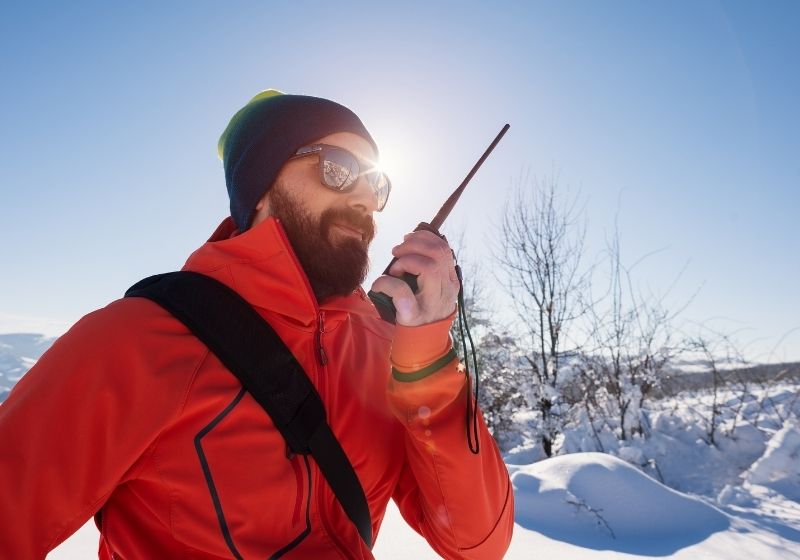
Though not a substitute for the essential avalanche gear listed above, emergency communication is invaluable. This could be anything from cell phones to satellite phones to VHF radios which require a license.
What you go with depends on where you will be hiking. For instance, satellite phones work well in remote locations while cell phones can work close to cities, areas, and highways. Another great option is a portable transmitter to send signals via satellite.
Other satellite messengers include GPS-enabled devices such as SPOT, or InReach that rely on commercial satellite networks to communicate location coordinates and short text messages to family and friends and family for help.
Note: Keep in mind however that these electronic devices might cause interference with your transceiver.
6. Snow Safety Tools
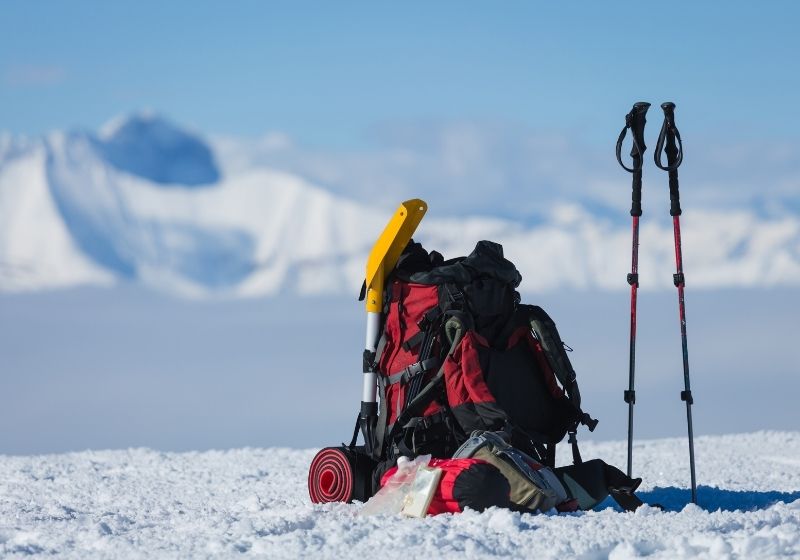
These include:
- Snow crystal card: This will effectively evaluate the layers of the snowpack when doing a profile on a snow-pit. It includes a measuring grid to analyze the size and type of snow crystals. Knowing how well snow layers are bonding, allows you to evaluate the stability of the snow.
- Snow saw: Besides coming in handy when constructing snow shelters, a snow saw can be paired with a snow shovel and be used for snow stability tests.
- Slope meter: This helps you to measure the angle of a slope to determine the probability of an avalanche. Other tools you can use to measure slope angle include several phone apps, a clinometer, and slope-angle stickers that are usually wrapped around ski poles.
7. Recco Reflectors
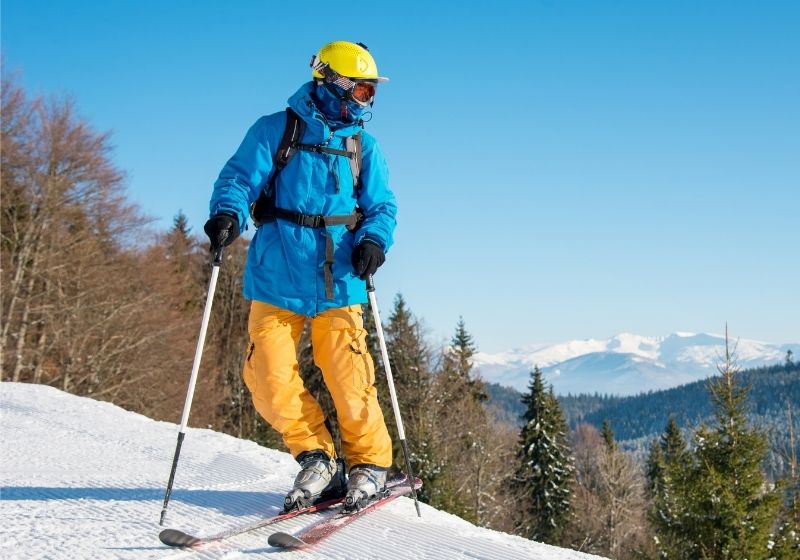
The last thing on our avalanche gear list are these tiny reflectors sewn on skiing gear by pack makers and ski-wear manufacturers. They make it possible to be rescued should you get caught in an avalanche. Luckily, they don’t require batteries as they are designed to work with signals that bounce off the passive reflectors.
Are you familiar with using avalanche gear? Watch this video by MSRGear on how to use your beacon, probe & shovel:
There you go, preppers. As you can see, there is nothing like being too prepared when you are out skiing in the snow. Avalanches can be lethal, which is why having the best avalanche gear will increase your chances of survival should you get caught in one or for when you need to rescue someone from one.
Do you have any tips on how to purchase the best avalanche gear? Let us know in the comment section below!
Up Next:
Don’t forget to stay connected with us on Facebook, Twitter, Pinterest, and Instagram!

